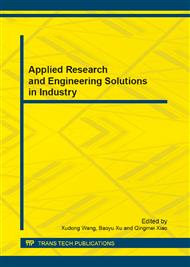p.796
p.800
p.805
p.810
p.817
p.822
p.826
p.830
p.835
Research of Vehicle Emissions Based on Catalyst Heating Function
Abstract:
With countries more and more strict in the requirement for the level of vehicle emissions, National Standard V for motor vehicle emission regulation draft arises. Several main related factors which influence vehicle emissions was analyzed. It analyzes the principle and advantages and disadvantages of catalyst heating function module mainly from electric control matching angle. By experimental comparison, the conclusion is drawn that analysing this module reasonably can effectively reduce the pollutant emissions. When catalyst is operating, fuel consumption has rose slightly, but it is still in the acceptable reasonable range. The discharge of pollutants has reduced significantly, which achieves National Standard V discharge engineering development target.
Info:
Periodical:
Pages:
817-821
Citation:
Online since:
February 2013
Authors:
Price:
Сopyright:
© 2013 Trans Tech Publications Ltd. All Rights Reserved
Share:
Citation:


